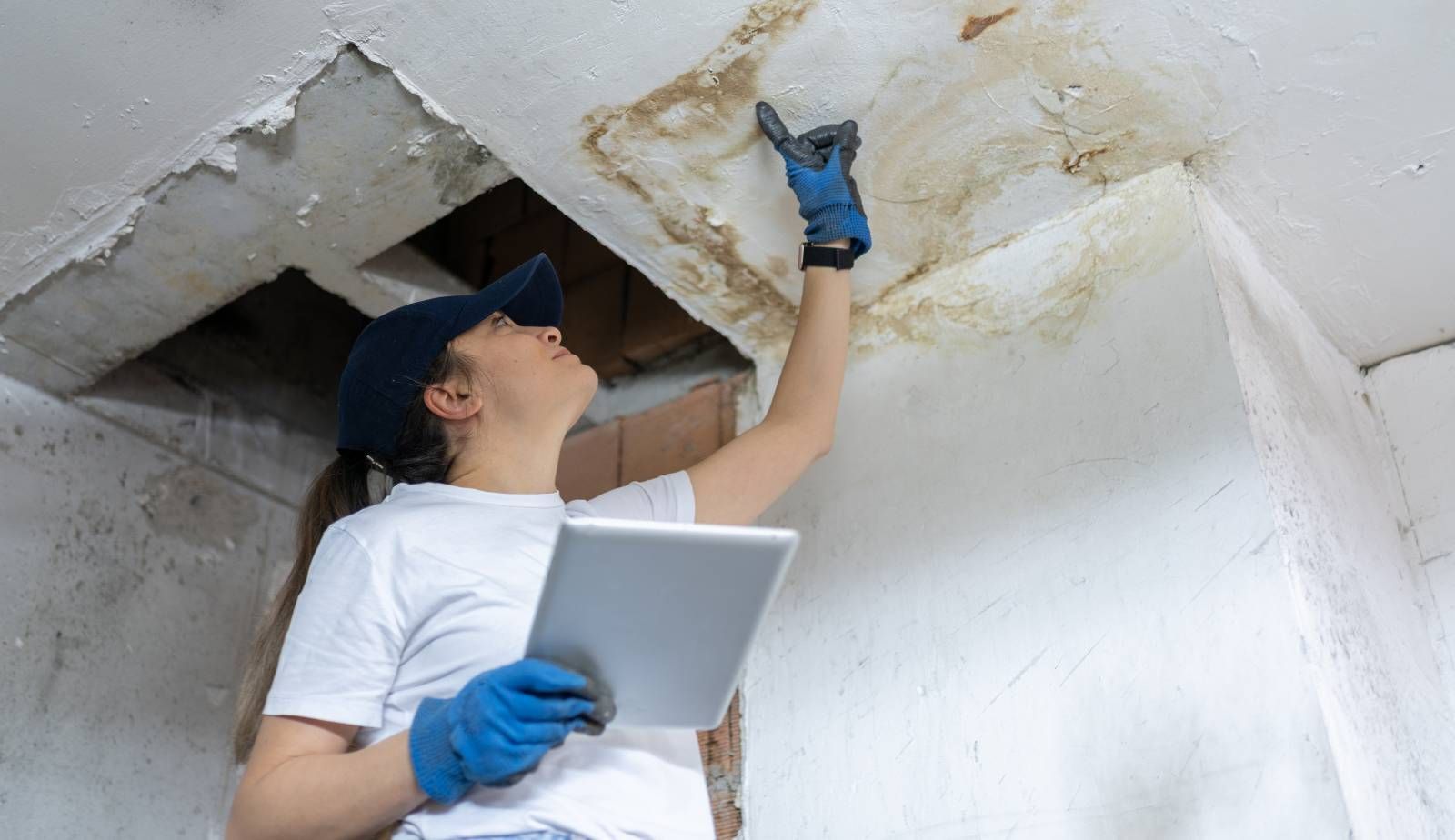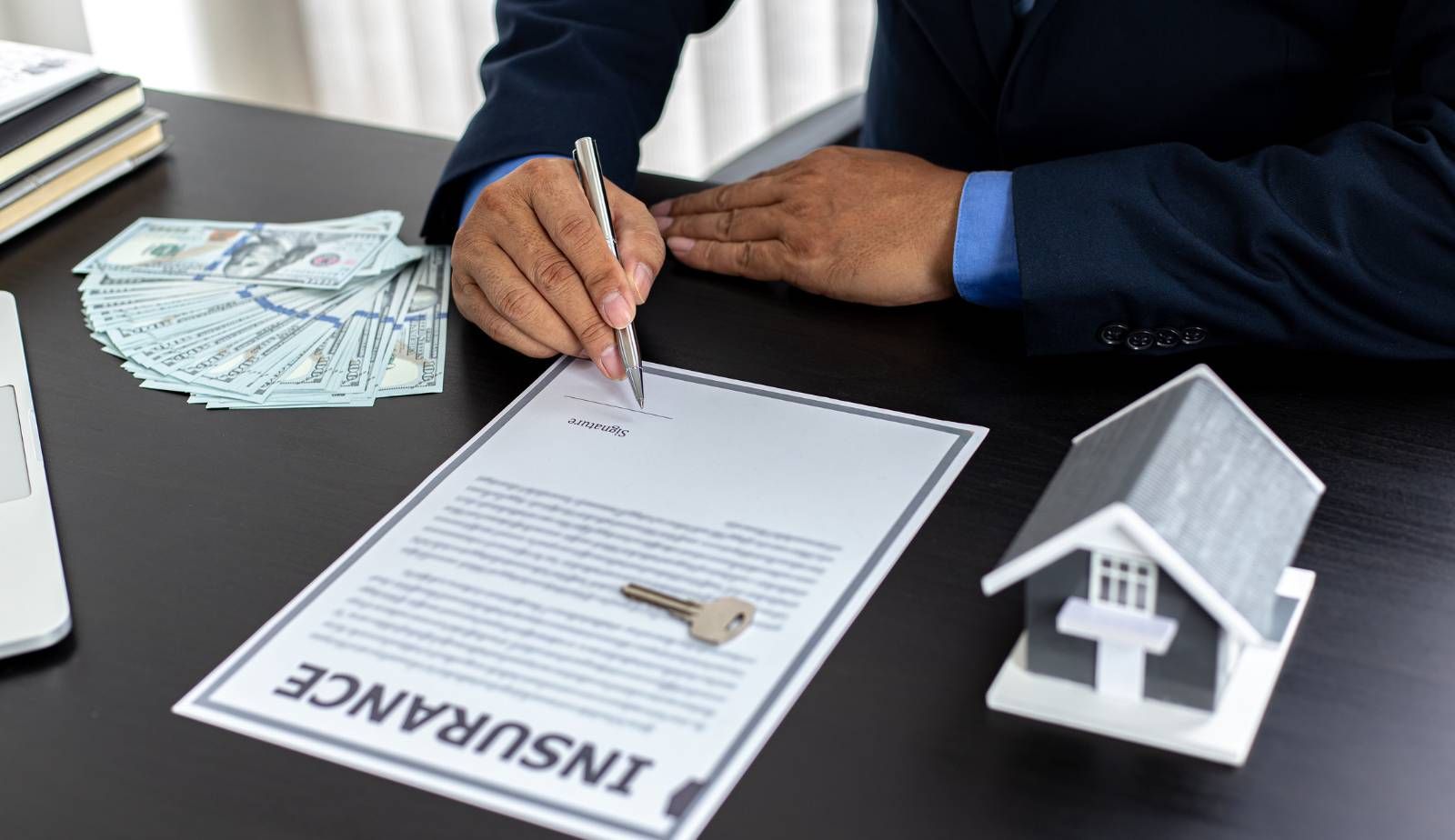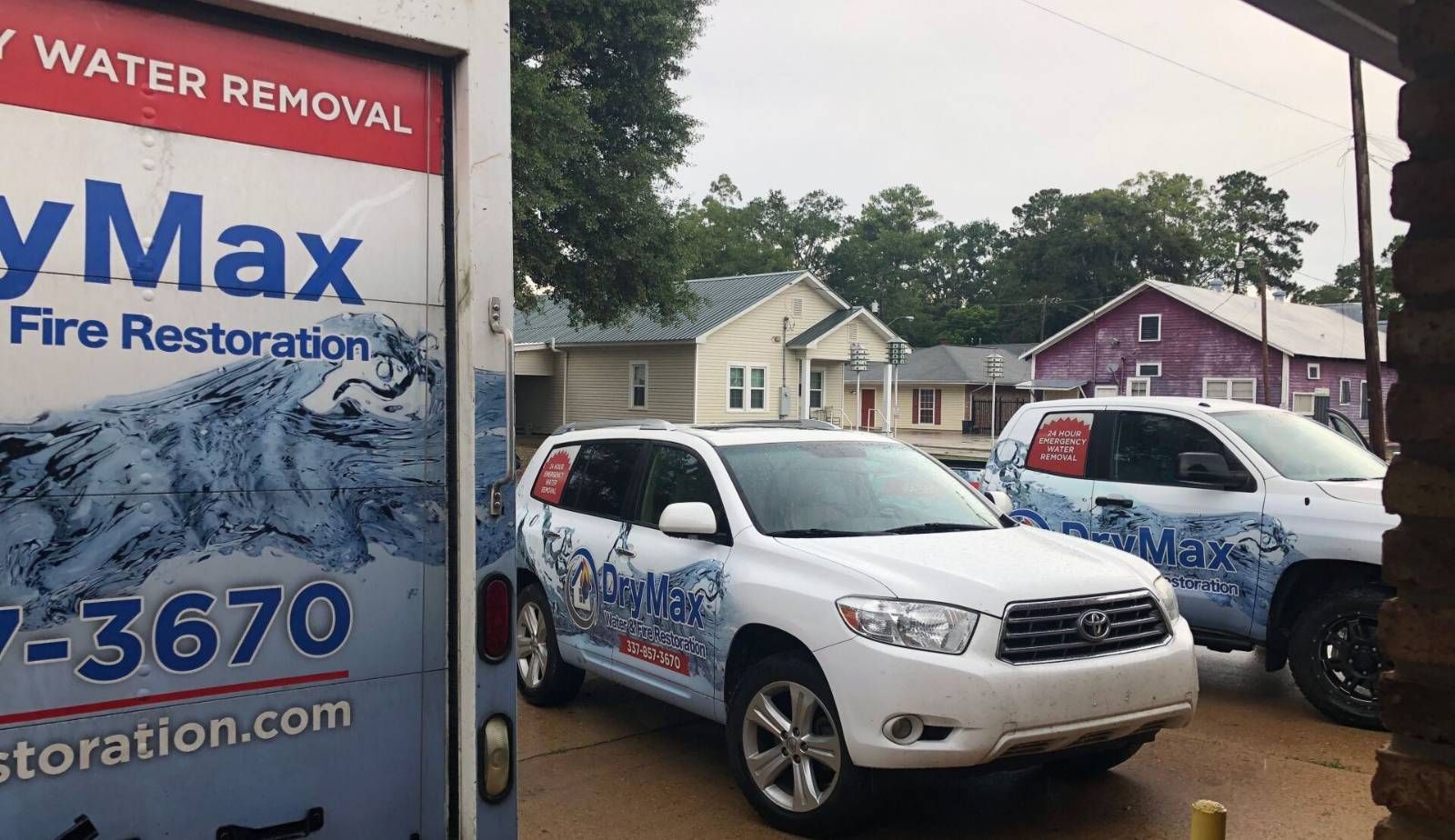Insurance Coverage for Water Damage: A Guide to Homeowner Policies and Negotiation Tips from Drymax
Understanding insurance coverage for water damage is crucial for homeowners. Most policies provide protection against sudden and accidental water damage, such as that from burst pipes or unexpected leaks. It is essential for homeowners to thoroughly review their policy, as coverage can vary significantly based on the insurer's terms and limitations.
Navigating discussions with insurance companies can be daunting. Homeowners can enhance their chances of favorable outcomes by documenting damage comprehensively and understanding their policy details. Transparency and clarity during negotiations can lead to better resolutions regarding claims.
To ensure adequate coverage, homeowners should regularly assess their insurance policies and consider any updates that may be necessary. Engaging with professionals, such as those from Drymax, can also offer valuable insights into maximizing insurance benefits and safeguarding one’s home from water damage effectively.
Examining Water Damage Coverage in Home Insurance
Understanding what water damage is covered under typical homeowner insurance policies can help policyholders make informed decisions. This section discusses the types of water damage usually covered and highlights common exclusions and limitations that can impact claims.
Types of Water Damage Covered
Most homeowner insurance policies cover sudden and accidental water damage, such as burst pipes or unexpected leaks. When the cause of damage is immediate and unintentional, homeowners generally have a better chance of receiving coverage for repairs.
Policies may also extend to certain types of water damage from storm-related incidents. For example, if rainwater breaches a home due to weather-related roof damage, the resulting issues might be eligible for coverage.
Notably, sewer backups may be included in some policies, though additional endorsement might be necessary. Homeowners should carefully review their insurance policy to ensure they comprehend the specific terms surrounding these coverages.
Common Exclusions and Limitations
While many water damage scenarios are covered, several exclusions can affect claims. Gradual damage, such as ongoing leaks or deterioration of plumbing systems due to neglect, usually does not qualify for coverage. Insurers expect homeowners to maintain their property properly.
Flood damage generally requires separate flood insurance, as most standard policies exclude it. This is crucial in flood-prone areas, where relying solely on homeowners insurance may lead to gaps in coverage.
Furthermore, claims arising from negligence or failure to perform regular maintenance are often rejected. Homeowners must ensure they address maintenance issues proactively to preserve their eligibility for coverage. Knowing these exclusions can help individuals protect their investments effectively.

Understanding Policy Terms and Conditions
Comprehending the specific terms and conditions of a homeowners insurance policy is essential for effective water damage protection. Key elements such as the distinction between sudden and gradual damage, and the significance of maintaining detailed maintenance records play a crucial role in determining coverage.
Defining Sudden vs. Gradual Damage
Sudden damage refers to incidents that occur unexpectedly, like a burst pipe or a malfunctioning washing machine. Homeowners insurance typically covers these events, assuming they fall within the policy's scope. Exclusions may include damage from flooding or weather conditions categorized as gradual damage.
Gradual damage involves slow, continuous deterioration such as leaks from aging plumbing. This type of damage usually results from wear and tear, which is often excluded from most homeowners policies. Understanding this distinction is vital for homeowners to avoid unpleasant surprises when filing a claim.
The Importance of Maintenance Records
Keeping detailed maintenance records can significantly influence the outcome of a water damage claim. Insurers may require documented proof of regular maintenance to ensure that a homeowner has taken appropriate steps to prevent gradual damage.
These records demonstrate a commitment to proper property upkeep, which can help in negotiations with insurance companies. If a claim arises due to maintenance issues, such documentation can be crucial in determining whether coverage applies, or if the claim is denied due to neglect. Homeowners should regularly maintain and organize their records for easier access during claims.
Navigating the Insurance Claims Process
Navigating the claims process can be complex and requires a methodical approach. Documenting damage accurately, maintaining effective communication with the insurance agent, and knowing how to handle disputes are key areas that can significantly affect the outcome of a claim.
Documenting the Damage
Thorough documentation is crucial when filing an insurance claim for water damage. Homeowners should take clear photographs of the damage and make detailed notes of the affected areas.
Create a list of damaged items, including their age and value.
Include any correspondence related to the incident, such as repair estimates or contractor quotes. This documentation acts as evidence to support the claim.
Keep records organized and readily accessible. This approach not only speeds up the claims process but also strengthens the case when facing scrutiny from the insurance company.
Effective Communication with Your Insurance Agent
Effective communication with the insurance agent can facilitate a smoother claims process. Homeowners should familiarize themselves with their policy to ask informed questions.
Maintain a record of conversations, including dates and outcomes, which will be helpful for future reference.
Be clear and concise when describing the damage and the needed repairs.
Contact the agent promptly if there are delays or concerns about the claims process.
Doing so demonstrates proactivity and ensures that the agent understands the urgency of the situation.
Building a good rapport can help foster a more cooperative relationship throughout the process.
Dispute Resolution and Negotiation
Disputes may arise during the claims process, making negotiation skills essential.
If a homeowner believes their claim is undervalued, they should gather additional documentation or expert opinions to present a stronger case.
It's advisable to remain professional and polite when discussing the claim with the insurance company.
Understanding the policy can help in highlighting any overlooked coverage aspects.
If negotiations do not yield a satisfactory outcome, consider escalating the issue within the insurance company or seeking mediation.
Homeowners should be prepared to clarify their position and why they believe their claim deserves reevaluation.

Special Water Damage Scenarios
Homeowners may encounter unique situations when dealing with water damage, particularly in areas prone to flooding or where appliances can malfunction. Understanding these scenarios can help ensure adequate coverage and preparedness.
Flood Insurance for High-Risk Areas
For those living in high-risk areas, standard homeowners insurance typically does not cover flood damage. Homeowners should consider purchasing separate flood insurance to protect against this risk. These policies are designed to cover damages caused by rising water, especially in low-lying areas vulnerable to heavy rainfall or storm surges.
Flood insurance can help with replacing damaged belongings, such as furniture and electronics. It's important to review the specific terms of a flood policy, as coverage limits and exclusions may vary. Homeowners should also check if they are required to have flood insurance based on their location.
Managing Water Backups and Overflows
Water backup incidents often result from clogged drains or failed sump pumps. Homeowners should verify if their policy includes water backup coverage to protect against damages from these situations, as this coverage is not always included in standard policies.
If a homeowner faces a backup, contacting a restoration service promptly can mitigate further damage. Keeping the property well-maintained can reduce the risk of backups. Regular inspections of plumbing and drainage systems are essential. Homeowners should also consider installation of valves that prevent water from flowing back into the home.
Handling Appliance-Related Water Damage
Appliance leaks can cause significant water damage if not addressed quickly. Common culprits include dishwashers, washing machines, and refrigerators with supply lines that may develop leaks over time. Homeowners should check their policies for coverage against accidental damage caused by appliances.
Immediate action is crucial when an appliance malfunction occurs. Homeowners should shut off the water supply to the affected appliance and remove any standing water to minimize damage. Having a maintenance schedule for appliances can help identify potential issues before they escalate, ultimately protecting the home and finances.
Preventative Measures to Avoid Water Damage
Taking proactive steps to prevent water damage is essential for safeguarding a home. Homeowners can mitigate risks by addressing potential issues related to plumbing, maintaining the property, and using technology for early detection.
Protecting Pipes from Freezing
To prevent frozen pipes, homeowners should insulate all piping in unheated areas, such as attics, basements, and crawl spaces. Insulation helps maintain a consistent temperature around the pipes, mitigating the risk of freezing during cold spells.
Additionally, homeowners should keep the thermostat set to a minimum of 55°F, even when away. Allowing faucets to drip on particularly cold nights can also relieve pressure in the pipes and prevent freezing.
After significant temperature drops, checking for cracks or gaps in walls near pipes can help locate potential drafts. Sealing these gaps reduces the likelihood of freezing conditions developing.
Regular Maintenance and Inspections
Routine inspections are essential in identifying maintenance issues before they worsen. Homeowners should check for signs of leaks under sinks, around appliances, and in the basement regularly.
Scheduling professional plumbing inspections at least once a year can uncover hidden issues like corrosion or degraded seals. Fixing these problems promptly helps prevent potential leaks that could lead to significant water damage.
Maintaining gutters and downspouts is also crucial. Regularly clearing debris ensures proper drainage and reduces the risk of overflow, which can lead to water pooling near the foundation.
Smart Home Tools for Leak Detection
Incorporating smart home technology can enhance preventative efforts against water damage. Leak detectors can be strategically placed near appliances, under sinks, or in basements to provide real-time alerts of moisture or water leaks.
Many leak detection systems connect to smartphones, allowing homeowners to monitor their property remotely. Water alarms are also beneficial; they emit loud alerts when they detect moisture, prompting immediate action.
Investing in smart home tools not only provides peace of mind but also helps in addressing potential issues before they develop into serious damage. These technologies play an essential role in safeguarding a home from unexpected water-related problems.
What to Do When Water Damage Occurs
When water damage strikes, timely action is crucial to minimize loss and prevent complications such as mold growth or extensive repairs. Addressing the situation with a clear plan can help alleviate the financial burden associated with cleanup and possible water damage claims.
Immediate Steps to Minimize Loss
The first step is to ensure safety. Turn off the electricity in the affected area to prevent electrical hazards. If possible, shut off the main water supply to stop further leakage.
Next, remove any valuable items or furniture from the area. This action can help reduce potential damage and facilitate easier cleanup. Assess the extent of the water damage and take photographs for documentation purposes; this will be beneficial for insurance claims later.
Use towels, mops, or a wet vacuum to remove standing water. Prioritize areas that remain dry to avoid encouraging mold growth. Open windows and doors to promote air circulation. If weather permits, a fan can help expedite drying.
Professional Cleanup and Restoration Services
Engaging professional cleanup and restoration services can mitigate long-term damage. These experts assess the situation comprehensively and employ specialized equipment to effectively remove moisture.
They also identify potential mold risks and provide treatment options. Mold damage can develop within 24-48 hours. Quick professional intervention helps ensure that any hidden moisture is addressed.
Additionally, these services can assist with navigating water damage claims. They understand documentation requirements and may collaborate with the insurance company, reducing the stress for the homeowner.
Investing in these services can ultimately safeguard the home from severe structural issues and financial setbacks.
Additional Insurance Considerations
When evaluating homeowners insurance, understanding the specific policy types and potential additional coverage options is crucial. Knowledge of these aspects aids in selecting the best protection for water damage and ensuring adequate coverage.
Comparing HO-3 and HO-5 Policies
The HO-3 and HO-5 policies represent two common types of homeowners insurance. The HO-3 policy typically covers a wide range of perils, including water damage from sudden incidents like burst pipes. However, it may exclude certain types of damage, such as that from sewage backup.
On the other hand, the HO-5 policy offers broader coverage. It includes personal property at a replacement cost and covers water damage more comprehensively. This type of policy is beneficial for homeowners seeking extensive protection, particularly in flood-prone areas.
In summary, homeowners should carefully consider their needs when choosing between an HO-3 and an HO-5 policy. While HO-3 is often more affordable, HO-5 provides enhanced coverage, which could ultimately save money in potential claims.
Assessing the Need for Additional Coverage
In some cases, standard homeowners insurance may not provide sufficient protection against water damage. Homeowners might need to consider additional coverage options, such as endorsements or separate flood insurance.
Flood insurance offers critical protection in areas susceptible to flooding, which standard policies typically do not cover. Homeowners should evaluate their property’s flood risk using maps and local data.
Additionally, specific endorsements can enhance coverage against water damage from sources like sewer backups or sump pump failures. These add-ons often require separate premiums but can be worth the investment.
Ultimately, assessing the need for additional coverage should involve a thorough review of personal risk factors and local environmental conditions. This proactive approach can ensure homeowners secure the necessary protection for their assets.

Frequently Asked Questions
Homeowners often have specific inquiries regarding water damage insurance claims. Addressing these questions can provide clarity on filing claims, negotiating coverage, and understanding policy exclusions.
What steps should homeowners take to file a successful water damage insurance claim?
Homeowners should document the damage thoroughly, taking photos and making a list of affected items. They should notify their insurance company as soon as possible, providing all necessary documentation. Following the insurer's specific claims process and keeping detailed records of all communications is crucial for a successful claim.
How can policyholders negotiate with insurance companies for better water damage coverage?
To negotiate better coverage, policyholders should research their policy details and compare them with industry standards. Gathering evidence of comparable coverage and presenting this information professionally to the insurer can strengthen their case. Additionally, being persistent and following up regularly can be beneficial.
What are the common exclusions in homeowner insurance policies regarding water damage?
Common exclusions include damage from flooding, sewer backups, or gradual leaks. Policies often do not cover water damage caused by a homeowner's negligence. Understanding these exclusions can help homeowners make informed decisions about purchasing additional coverage or endorsements.
How can homeowners determine if their policy covers water damage caused by external sources?
Homeowners should carefully review their policy documents, focusing on sections discussing water damage. They can also directly consult with their insurance agent for clarification on coverage related to external sources, such as weather-related damage. This proactive approach helps ensure they understand their coverage limits.
In what scenarios would water damage from appliances be covered by homeowner insurance?
Water damage caused by appliances may be covered if it results from sudden and accidental incidents, such as a burst hose on a washing machine. Regular maintenance and proper installation are critical to ensuring that coverage applies. Homeowners should document any instances of malfunction for their records.
What are the best practices to ensure maximum payout for water damage claims under homeowner insurance?
To maximize payout, homeowners should maintain detailed records of repairs and cleaning efforts. They should also obtain estimates from contractors and keep all receipts. Promptly reporting the damage to the insurance company and following up regularly can help facilitate a smoother claims process.
You might also like
DryMax Restoration Blogs




